
The Japanese car that the second generation model was based on was more feminine as it was targeted at women. With its curvy roof-line and lamps, bench seating and cosy interiors, it would make many ladies feel at home.
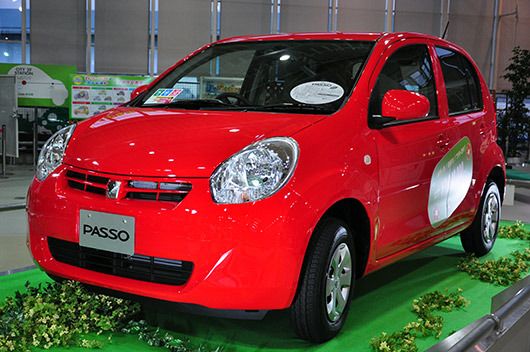
I was lucky enough to have a feel of the Toyota Passo last year in Tokyo, and I admit it certainly fitted the 'cute and comfy' description. It was available in two specs - the cute 'Passo' and the slightly sportier 'Passo + Hana'.
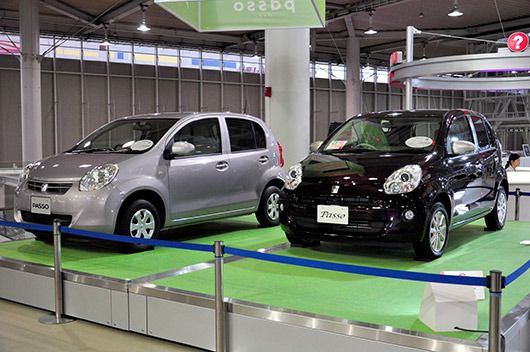
However Perodua needed their car to be unisex in order to make the numbers, so unlike the previous generation Myvi, this time they did a rather thorough redesign of the car's exterior and interior. Gone was the look of the rear, replaced with a design echoing the previous model. Changed too was the rounded front, replaced with sharper-angled projector-based headlamps and grille.
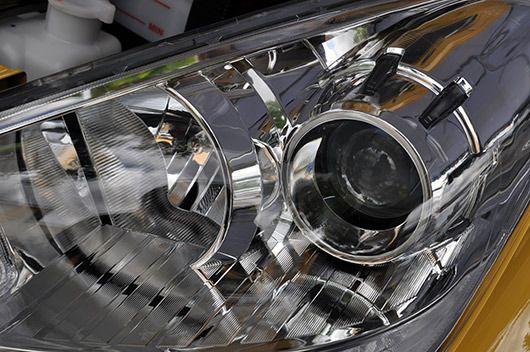
In my humble opinion, the headlamps and grille of the 1.3L model didn't quite gel together and made it look like a cross between the Perodua Viva and the previous generation Hyundai Accent. The side mirrors get neatly-designed integrated signal indicators as well.
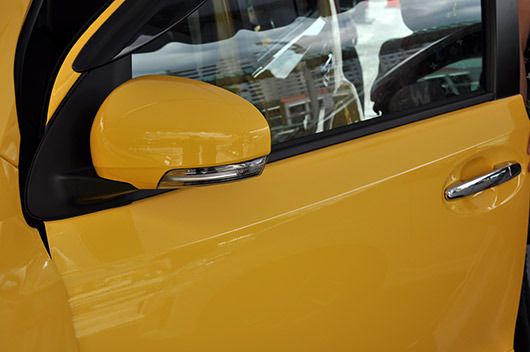
Out goes the bench seats, replaced with more conventional ones, and the dash takes on a totally different design, with the gear on the dash (for automatic transmission models) instead of the stalk in the Passo/Boon. The funky instrument panel is gone, but in its place is an Optitron unit not unlike something you'd find in a Toyota or Honda.
Onwards to the new 1.5L model. In keeping with the Malaysian demand for more power, the Myvi was further developed to incorporate a 1.5 litre engine and transmission. The 1495cc twin-cam DVVT-equipped 3SZ-VE engine is similar to the one found the Toyota-Daihatsu-Perodua stable like the Perodua Nautica, Perodua Alza, Toyota Avanza and Daihatsu Gran Max to name a few.
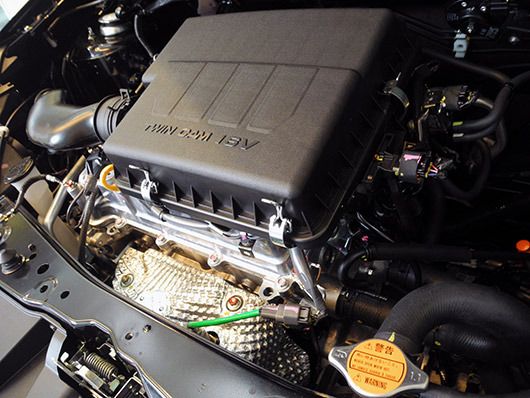
You would have noticed that all the other vehicles listed are considerably heavier than the Myvi, which meant that the Myvi 1.5 would have the best power-to-weight ratio among them. This, coupled with electric steering (which doesn't sap power from the engine) should provide adequate 'oomph' to the vehicle. The exterior gets a slight revamp to differentiate the new model from its smaller-engined sibling. The front gets a redesigned bumper and a gunmetal-colored grille that actually gels better with the overall front design. The rear gets a new bumper too with an integrated 'diffuser' design. Dubbed the Special Edition or SE, it's easy to see the link with the previous model. The reviewed Extreme model however, gets further add-ons to the exterior, notably an aggressive lip extension up front...
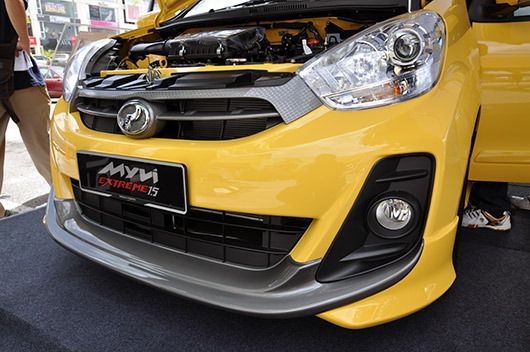
...and more radical diffuser at the rear.
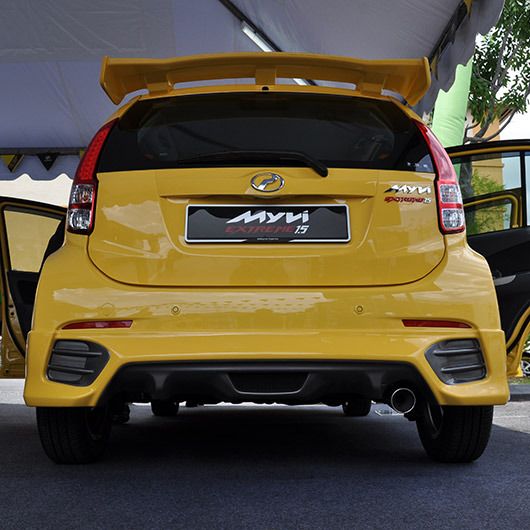
It also gets lower side-skirts, chrome door handles, additional side-moulding and an racier wing.

The rims on the vehicle on the other hand are minuscule 14-inch units (with equally skinny tyres) that are one-directional - meaning they roll backwards on the left side of the car.

The colors available are Majestic Yellow...
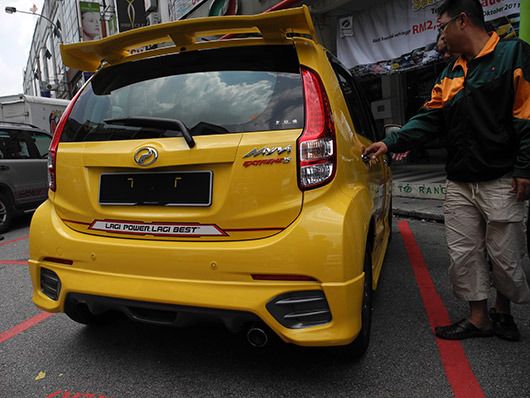
...Ebony Black...

and Ivory White.
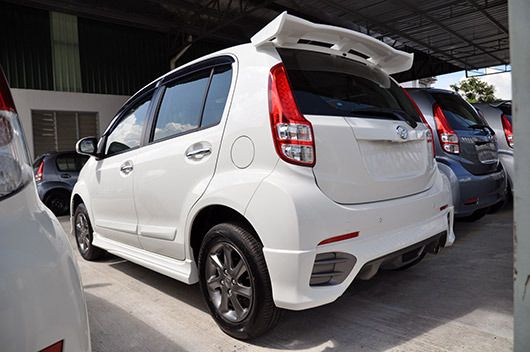
Inside the Myvi Extreme 1.5 gets the full-black treatment for the dashboard and seats (now with leather covers) and also the same six-inch multimedia-ready LCD touchscreen as the 1.3 Elegance model.

The LCD unit on glossy piano black surface is a joy to use and has pretty decent touch sensitivity.

And if you wish you can also control the stereo via buttons on the neat leather-wrapped steering wheel.
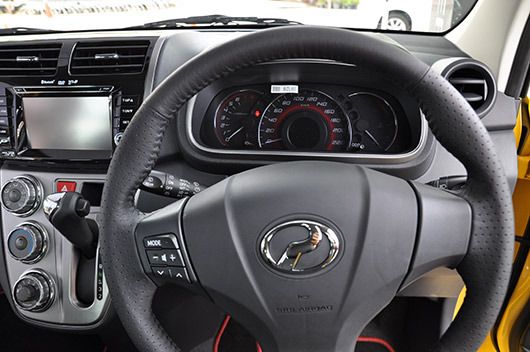
Sound quality from the four speakers however isn't as good as the Clarion units in Proton. Like the previous-generation model, the tiny front speakers are only 4-inches wide! And on the dash, the Optitron unit now glows bright red to match the sportier nature of the car.

The door panels however get only fabric covers instead of leather and tacky silver mock carbon-fiber textures.
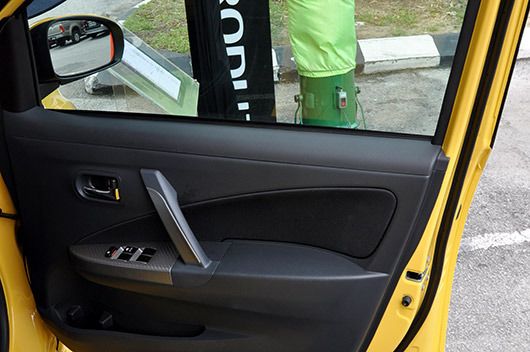
The car also gets full tinting for all windows, although I suspect it isn't really high end to reduce costs. Seat space is pretty good for its class, with adequate legroom in the rear due to improvements with the new model's configuration.
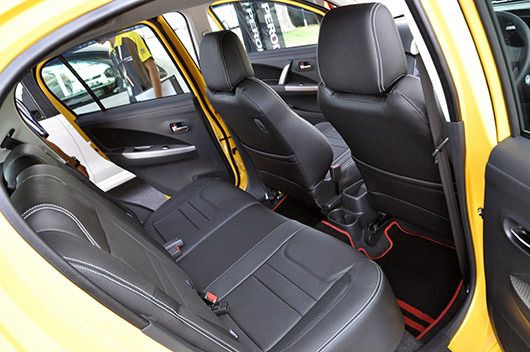
However, this comes at the expense of boot space in the rear, which is noticeably smaller than the previous model.
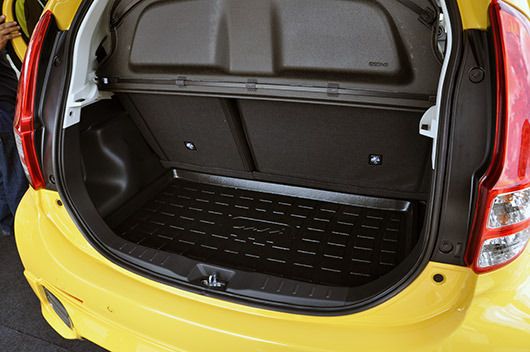
How is it like to drive the Extreme? Well, upon starting up the engine, the instruments 'glow' to life in a pretty cool manner, and I must say that gives a much upmarket feel to the car. Upon stepping on the pedal and accelerating, the boost in power is immediately felt, and the car feels rather zippy and eager to climb to 100kmh. However it should be noted that the car is still a Myvi and is no hot hatch. Hit the corners and the car leans quite a bit. The steering is light and smooth, but suffers slightly from the lack of feedback notoriously associated with electric steering. The ride is firmer (albeit still comfy) than before, but might still be 'floaty' to some. For a range-topping flagship model (especially with a name like Extreme), you'd expect Perodua to put at least a little more into the handling to better suit the sporty image and new-found power. Nevertheless, I'm sure tuning companies will be coming up with numerous upgrade packages for this model soon enough.
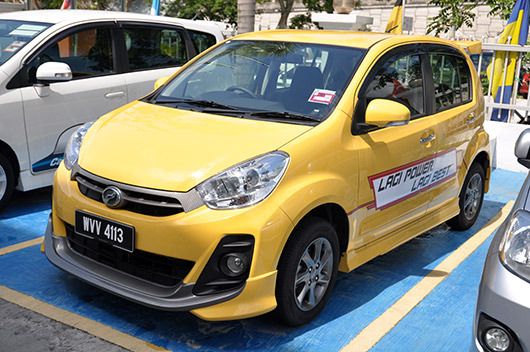
Overall the Myvi Extreme 1.5 is a pretty decent car for its class. The new 1.5-litre engine really makes its presence felt and will prove handy for when you need that little extra 'oomph' during city driving. While some may say the RM5k premium over the SE model might be pricey, I say for those in the market for a Myvi, it's a justifiable cost for the little extras that make a difference and that slight exclusivity on the road - there aren't as many Extreme units running as the SE... at least for now that is.
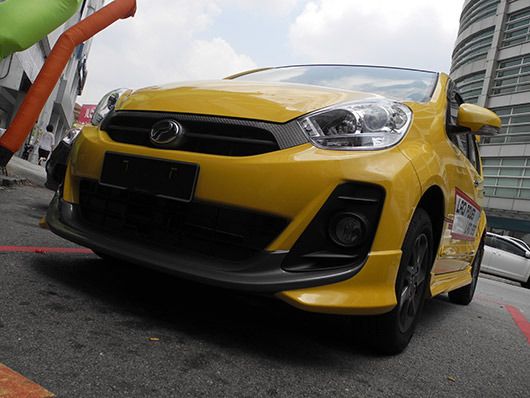
Perodua should however note that the Myvi is now entering competitive new territory, with it being closely-priced to offerings from fellow national car-maker Proton, like Satria Neo, GEN.2 and Persona, or even their own Alza. Some buyers seeking a better car might even opt to top-up a little and go for the sportier Ford Fiesta or Suzuki Swift instead.
The Myvi Extreme 1.5 price ranges from RM58,200.00 for a solid-colored manual to RM61,700.00 for a metallic-colored automatic. Waiting period ranges from 2 weeks to a month.



No comments:
Post a Comment